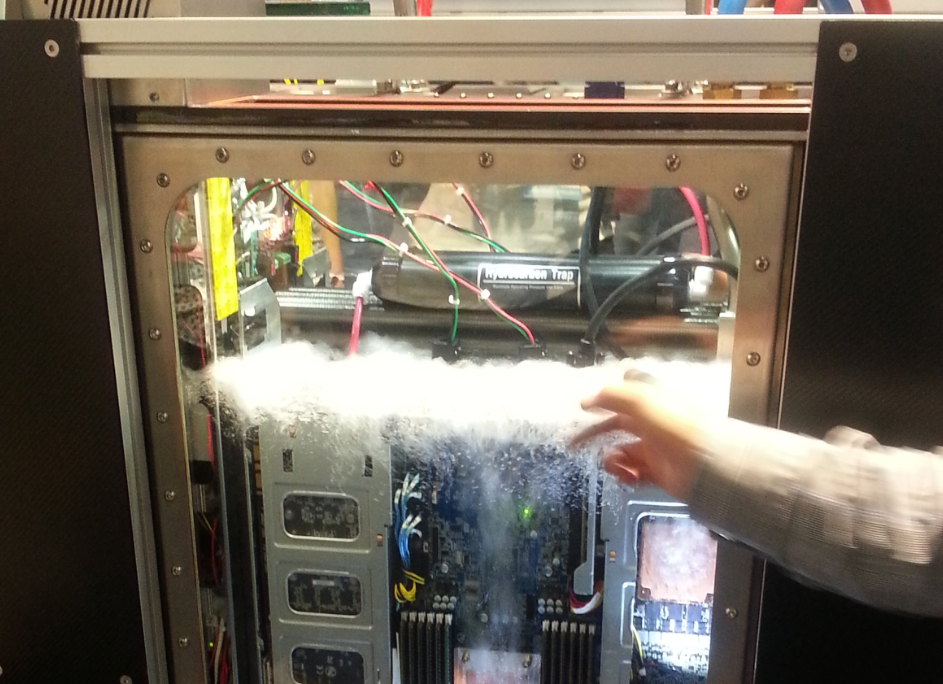
In an event filled with thousands of examples of upcoming technology, it’s not often that thermal management takes center stage as a highlight of one’s trip to the annual Consumer Electronics Show (CES). But this year, my attention was immediately captivated when I caught sight of what looked like a fully functional computer submerged in some cooling fluid. “Did I just see an ‘underwater’ computer? What?” my mind asked itself as it did a double-take, pivoting on my heels to turn back.
Making my way through the South Hall 1 at the Las Vegas Convention Center, I stumbled upon an exhibit at computer hardware manufacturer Gigabyte’s booth showcasing a server completely immersed in a non-electrically conductive fluid. The fluid in question turned out to be Novec, a cooling solution developed by 3M and used by Gigabyte in its server-side cooling.
“We built the machine as a proof-of-concept using eight Nvidia GTX 980 GPUs and two overclocked CPUs to demonstrate the Novec in action,” said Diego Lai, Project Manager at Gigabyte, when asked about the exhibit. “For it to work, there cannot be any moving parts. That means no fans or hard drives. Only SSD.” Lai, who invited me to stick my hand into the tank, could not disclose what the substance was made out of but explained that while it’s non-electrically conductive, it still removes heat from components and other heat sources. It’s also nonflammable.
Cautiously submerging my hand in what could’ve easily killed me had it been electrically conductive, I noticed two things: the temperature was very warm, and the substance felt slightly oily. Lai assured me that it’s not oil-based. “Check your fingers,” he said as I removed my hand from the tank. Within two to three seconds, the substance completely evaporated.
How much of the substance evaporates, and at what rate? I retorted. Lai said that evaporation rate is minimal, accounting for about 5% per year. That’s because the generated vapor condenses, then falls back into the bath as a liquid. No additional energy is needed to move the vapor, nor are chillers required for the condensers, which are cooled by normal facility water.
Gigabyte claims that the solution reduces cooling energy costs by up to 95%, compared to the conventional air conditioning cooling used in most server rooms. Energy savings aside, immersion cooling should theoretically allow for more tightly packed components. Gigabyte’s press release suggests that could enable up to 100 kilowatts of computer power per square meter, compared to only 10 kilowatts in a typical air-cooled solution.
The immersion cooling solution is aimed exclusively at an enterprise level, costing $75 per liter, or roughly $300 per gallon. That’s not to say that a gaming enthusiast couldn’t submerge their own next-gen gaming rig in Novel fluid, but expect to pay at least $1,500 for the fluid itself, let alone the condenser and any other required hardware.
Advertisement
Learn more about Electronic Products Magazine





